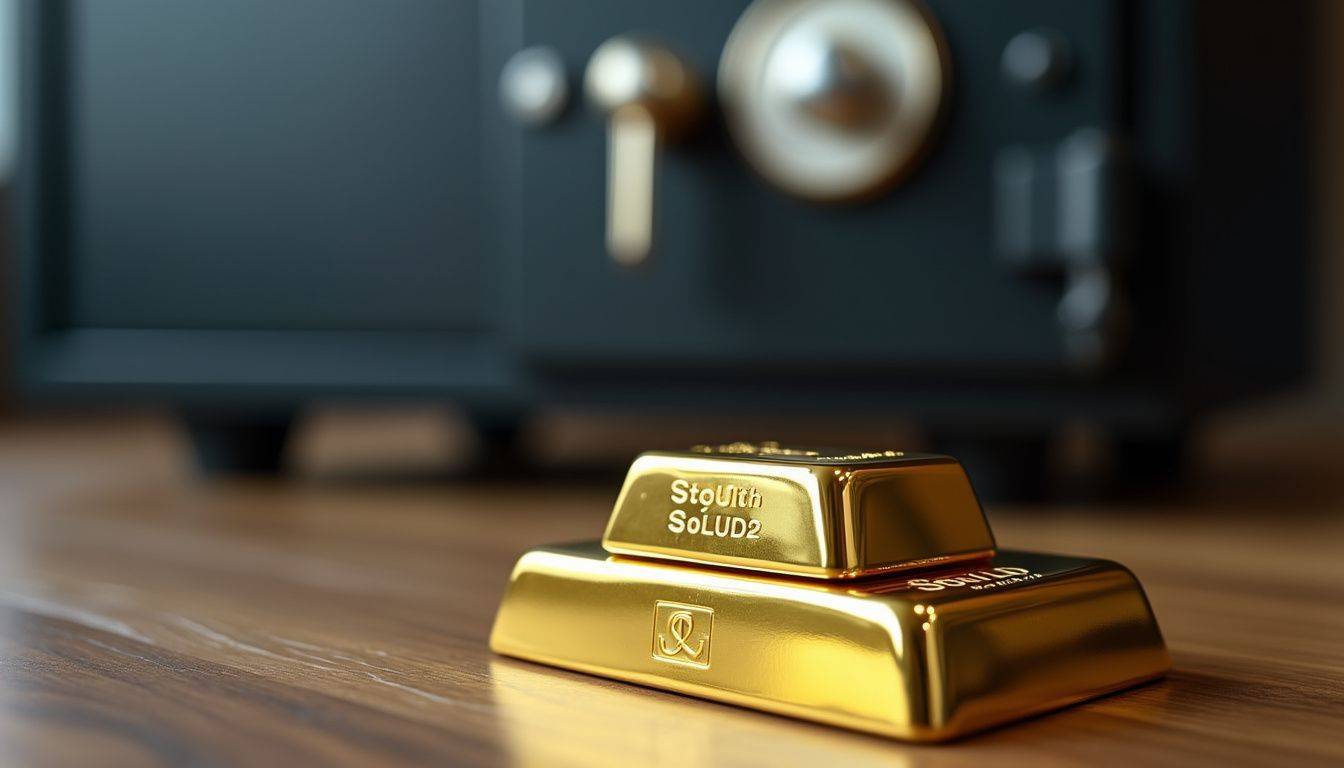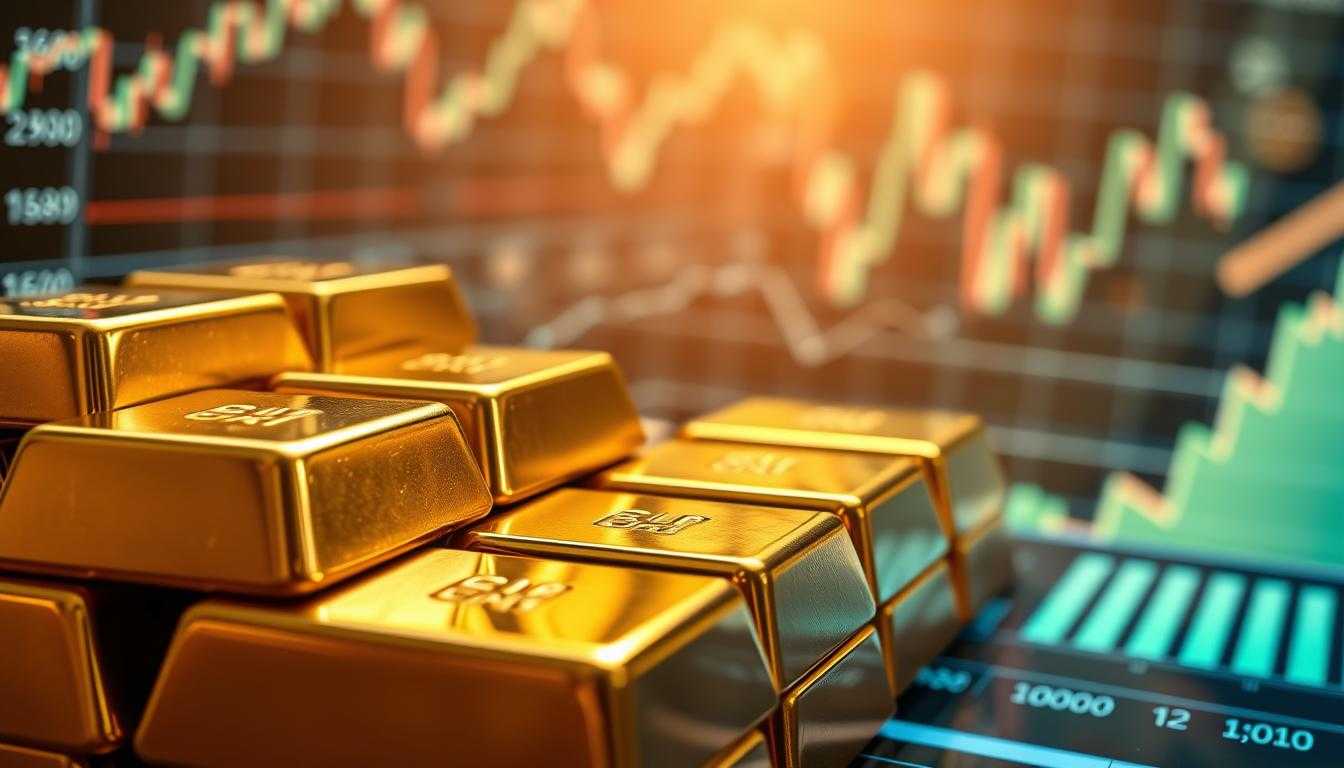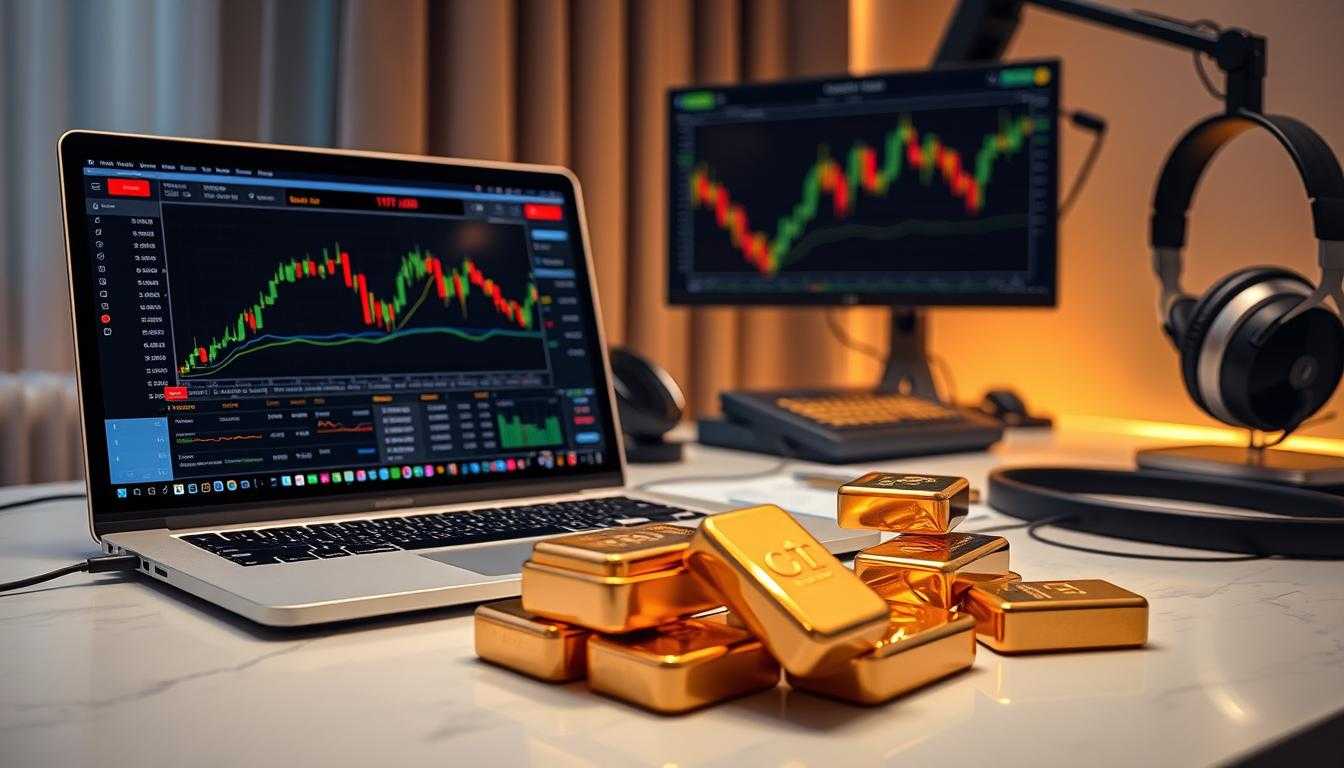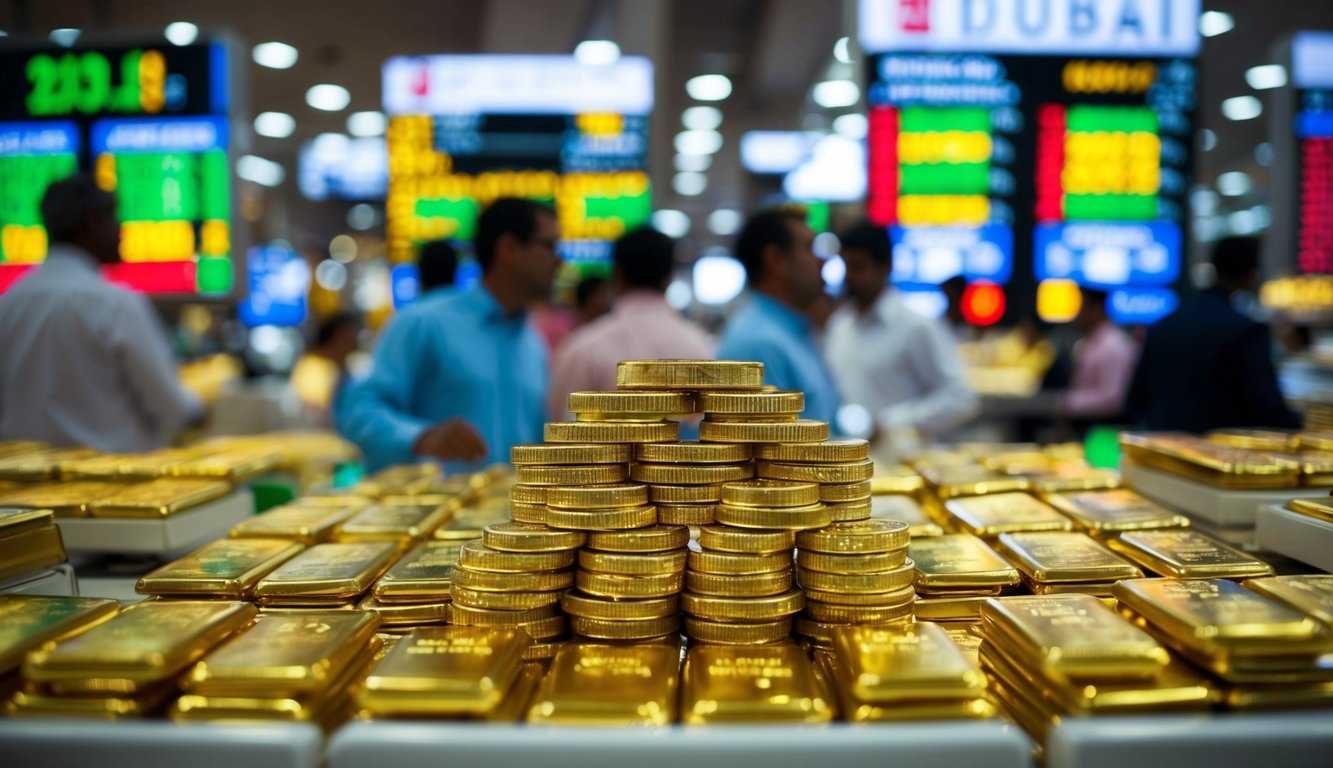Gold: a shiny metal that many think is just for jewelry. But did you know it’s also a smart way to protect your money? Right now, the price of gold changes every day. It can go up or down based on things happening around the world.
This makes some people nervous about using gold to save money.
Here’s something interesting: experts look at patterns in gold prices and see ways to use these ups and downs to make more money over time. Our blog will show you how to do just that with today’s gold rate.
We’ll make it easy to understand how buying gold, whether as bars, coins, or in a fund, can help you keep your savings safe and even grow them.
Ready to be smarter about your money? Keep reading.
Understanding the Current Gold Rate

So, you’re curious about the gold price today, huh? Well, lots of things can change how much gold costs – like if people buy more jewelry or if countries are having a tough time getting along.
Plus, keeping an eye on this shiny metal’s price can give us hints about what might happen in money markets around the world.
Factors influencing today’s gold prices Market trends and expert insights considerably influence the current gold rate. Regular analysts’ updates enable traders to thrive. Global events substantially affect gold prices. Consider how international negotiations, legislation introductions or significant political shifts can introduce instability.
Market trends and expert insights considerably influence the current gold rate. Regular analysts’ updates enable traders to thrive. Global events substantially affect gold prices. Consider how international negotiations, legislation introductions or significant political shifts can introduce instability.
During these periods, individuals often opt for gold purchase considering it as a reliable asset for their capital.
Economic indicators such as interest rates, inflation, and the state of prominent economies (like the U.S.) significantly contribute as well. With a rise in interest rates, gold may lose its allure as individuals can earn returns from savings or other investments that abruptly appear to be safer or more lucrative.
Conversely, if economies are facing challenges or if inflation is soaring, people might turn to gold to safeguard their wealth.
Comprehending current gold rates is essential for smart trading decisions.
Recent trends in gold rates
Understanding how gold prices move is challenging, but not impossible! Gold’s value fluctuates due to various factors. Let’s simplify it.
| Date | Gold Rate Change | Reason |
|---|---|---|
| Early 2023 | Rise | Gold is increasingly sought after as a secure investment. |
| Mid 2023 | Small drop | Investors consider stock market for potentially higher returns. |
| Later 2023 | Steady | Investors are cautious, observing market trends. |
For the trader or investor, timing is crucial. Acquiring gold during price dips could be advantageous. Retaining gold during stable periods can also lead to profitable outcomes. Gold is not just any metal, it’s a viable option for safeguarding assets during uncertain economic times.
Understanding the Impact of Gold Rates on Financial Markets
Gold rates move up and down. These changes touch many areas, from stocks to Forex. Think of gold as a mood ring for the economy. When things look uncertain, people buy more gold. This pushes its price higher.
These shifts in gold prices can shape how traders act in different markets. For example, if gold prices soar, it might mean inflation is coming. So, investors might pull money from stocks and put it into gold or bonds.
On the other hand, if gold rates fall, folks may see this as a sign to invest more in riskier assets like stocks or real estate.
Gold’s dance with the dollar is also key to watch. A stronger U.S. dollar often means lower gold prices because it costs less dollars to buy the same amount of gold. But if the dollar weakens, expect to pay more dollars for that same amount of precious metal.
In short – keep an eye on those glittering rates! They signal big moves across financial playgrounds far beyond just shiny jewelry stores or coin collections
The Role of Gold in Financial Planning
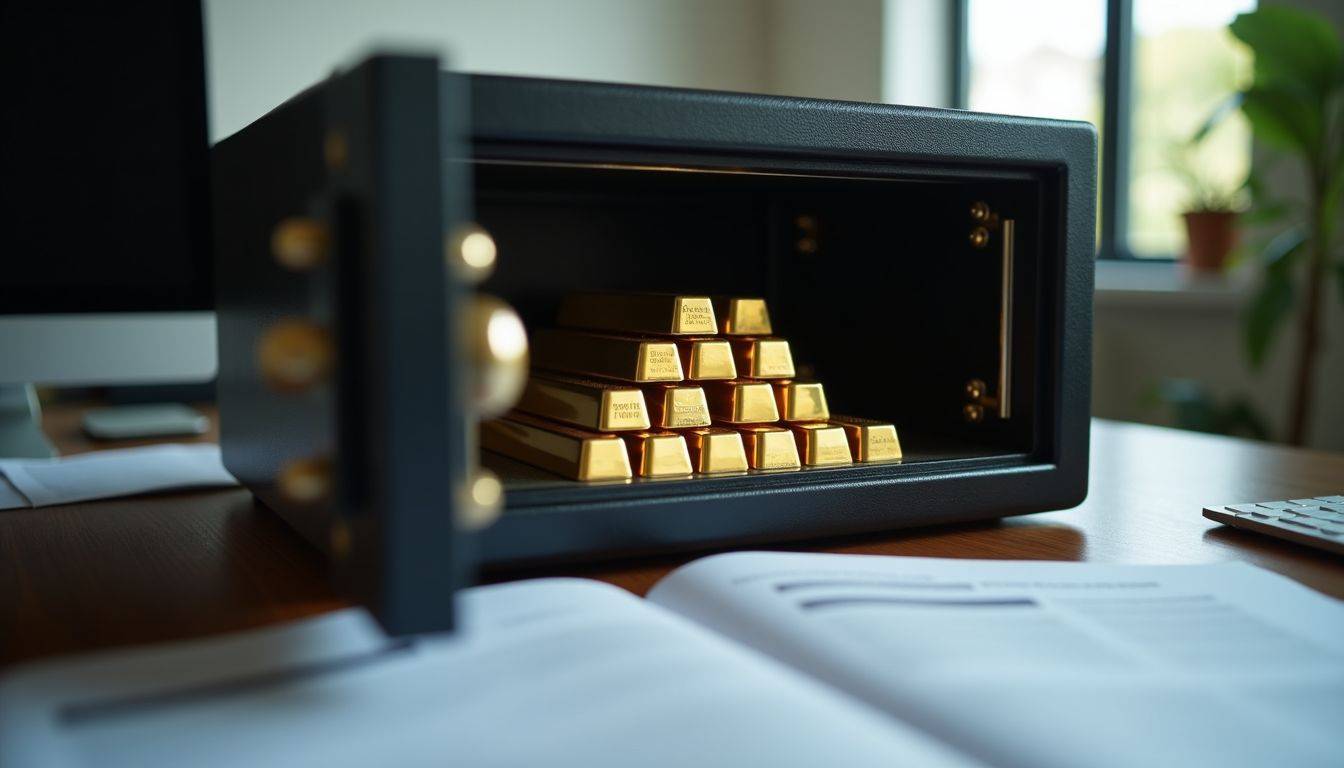
Gold acts like a safety net against money losing value. It helps make your money mix more varied, too.
Gold as a hedge against inflation
Gold keeps its value when prices go up. This makes it a strong tool against inflation. As costs rise, so does the value of gold. It acts like a safe place for money during uncertain times.
People often turn to it when they’re worried about losing their buying power.
In times of economic uncertainty, gold is not just a metal; it’s peace of mind.
Next, we’ll look into diversifying investment portfolios with gold.
Diversifying investment portfolios with gold
Adding gold to your portfolio can make it stronger. It’s like having a safety net. This metal is great for fighting inflation and keeping your money safe when prices rise. Think of it as mixing different fruits in a salad; each brings its own taste and benefits.
Gold does that for investments, giving balance and safety.
Many people use physical gold, exchange-traded funds (ETFs), and gold individual retirement accounts (IRAs) to add this precious metal to their mix. These tools let you invest without needing to hold the metal yourself.
They’re easy ways to get into the gold market, offering liquidity and flexibility. Next up, we’ll discuss how timing plays a big role in buying and selling gold for long-term success.
Strategies for Leveraging Gold for Long-Term Success
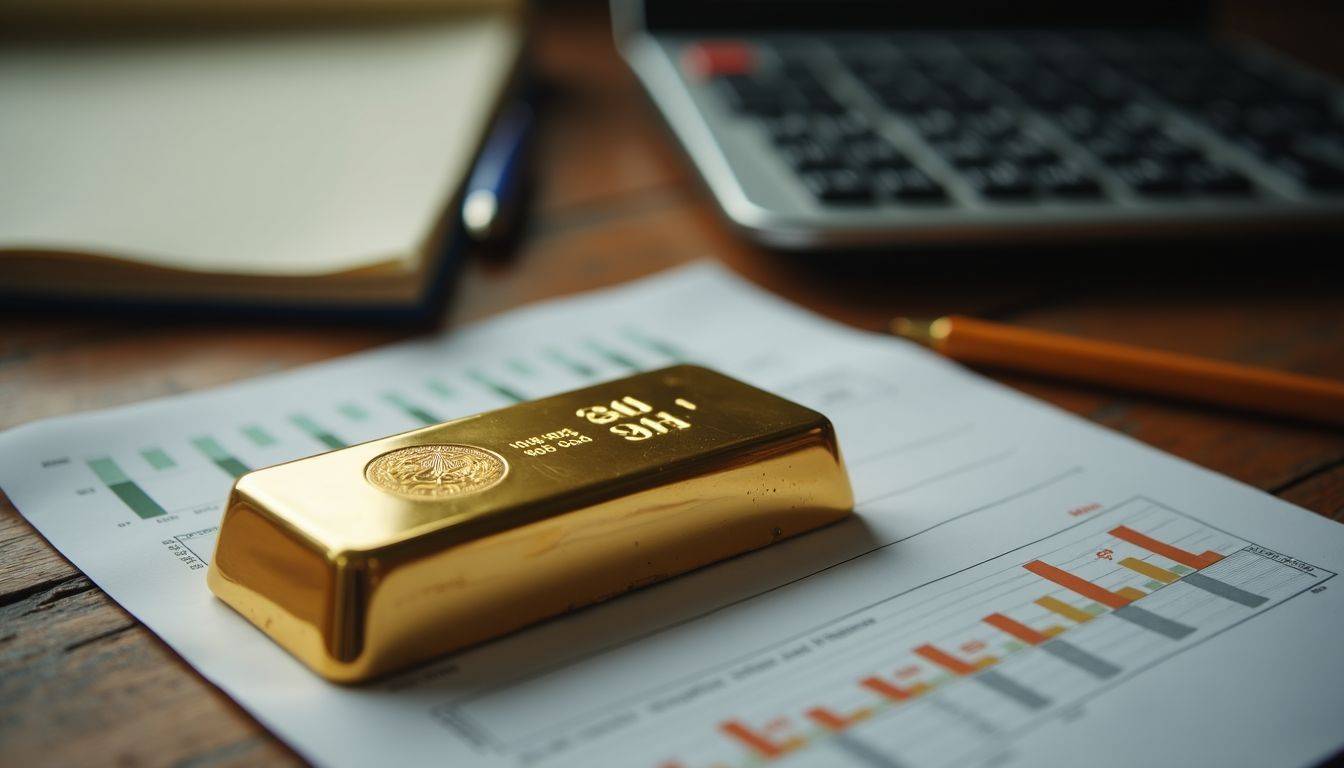
Knowing when to buy and sell gold can make a big difference. Using things like gold contracts and exchange-traded funds smartly plays a key part too.
Timing the market: when to buy and sell
Timing the market right is key to buying and selling gold. It helps you make the most from your investment. Here’s how to do it:
- Watch for inflation signs. When prices of goods rise, gold often becomes more expensive.
- Keep an eye on the Fed’s movements. If they raise interest rates, gold prices might drop.
- Notice big news stories. Wars or political unrest can make gold a safe place for money.
- Mark calendar events like company mergers or big economic reports. They can sway gold prices.
- Track currency changes. A weaker dollar usually means higher gold prices.
- Look at supply and demand in reports from precious metals groups. Less gold mining could mean higher prices.
- Use charts for technical analysis. They help spot trends in gold’s price over time.
- Follow expert forecasts but think for yourself too.
- Consider if it’s a short-term trade or a long hold; strategies differ.
- Check past highs and lows in price to set buying or selling points.
Do these steps to get better at timing the market for gold investments.
Long-term investment vs. short-term trading
Understanding the ideal time for buying and selling gold is crucial, and the choice between retaining it for an extended period or trading it swiftly can significantly impact your financial status. Let’s explore the variances between long-term investment and short-term trading in gold.
- Long-term investors commonly perceive gold as a secure spot to safeguard their finances during challenging times such as periods of high inflation or economic recessions. They purchase gold bullion, coins, or even invest in gold IRAs to shield against potential devaluation over time.
- Individuals involved in short-term gold trading are keenly aware of daily price alterations. They possibly utilize futures contracts or exchange-traded funds (ETFs) to earn immediate profits based on their anticipations of price movements in the near future.
- Long-term investment implies lesser concerns about minor price drops. These investors concentrate on the tendency of gold’s value to increase over many years.
- Short-term traders need to keep up with daily market updates. Occurrences like decisions from central banks, geopolitical conflicts, or economic shifts can cause gold prices to swiftly rise or decline.
- Long-term investment is considered less hazardous as it averages the highs and lows over time. However, it also implies that your finances are tied up, hence not available for other emerging opportunities.
- Short-term trading can lead to substantial earnings quickly if price movements are accurately predicted. Conversely, it’s risky as it can also lead to substantial losses with the same speed.
- For those preparing for their retirement, acquiring physical gold or investing in a self-directed IRA with gold can provide a steady base for their savings as they near their golden years.
- Traders in search of short-term wins might lean towards derivatives like futures contracts or options on gold ETFs since these instruments allow them to wager on future price changes without possessing actual gold.
- Those striving for enduring financial growth often diversify their investment portfolios with both stocks and precious metals like gold to mitigate risk while still targeting satisfactory returns.
- Conversely, someone focusing on short-term trades might invest most of their time analyzing charts and market data, strategizing their purchases and sales precisely to gain profits from minor market movements.
Using gold futures and ETFs effectively
So, you’re thinking about long-term investments and quick trades. Let’s shift gears to gold futures and ETFs. These tools are golden keys for those aiming to squeeze the most out of their gold investments.
Gold futures contracts let traders buy or sell gold at a future date, locking in prices now against future market swings. It’s like placing a bet on where gold prices will head without needing a crystal ball.
ETFs, or exchange-traded funds, are another smart pick. They track the price of gold but trade like stocks on major exchanges – think of them as baskets holding nuggets of investment opportunity.
By including these in your strategy, diversifying your portfolio becomes simpler than ever. You avoid putting all your eggs in one basket while still riding the wave of gold’s value movements.
Both strategies harness today’s tricky markets for tomorrow’s gain—without needing physical bars stashed under your bed! No need to worry about safe storage or insurance; it’s all handled through paper assets that can grow over time with less hassle.
This way, investors can hedge against inflation and keep their portfolios shining bright even when other assets might dim.
Analyzing Historical Gold Rate Trends

Looking back at how gold prices have moved in the past is like peeking into a treasure map. This peep can show us the ups and downs over years and what they could mean for future investors.
So, don’t miss out on digging into these shiny nuggets of info!
All-time highs and what they mean for investors
Gold hitting all-time highs is a big deal for investors. It means the metal is really valuable right now. People see gold as a safe place to put their money when other things look risky, like during economic troubles or when prices are going up fast (that’s inflation).
When gold prices go way up, those who own it feel good because they have something worth more.
But there’s more to think about. High gold prices can also tell us that people are worried about the economy or that inflation might be coming. Investors use this info to make choices.
They might buy more gold to protect their money or sell some if they think the price will go down later. So, seeing gold at its highest price ever makes folks who invest stop and plan their next move carefully, looking at what’s happening around them in the world and in markets.
Patterns from the past 10 years
Alright, let’s dive straight into the gold rate trends from the past decade. We’ve seen ups and downs, surprises, and what-the-heck moments. Keeping an eye on these patterns is like having a map in the wild world of investing.
| Year | Key Events | Average Gold Price |
|---|---|---|
| 2013 | Price drop shock | $1,411 |
| 2014 | Steady but slow | $1,266 |
| 2015 | Not much change | $1,160 |
| 2016 | Brexit bumps prices | $1,251 |
| 2017 | Stable growth | $1,257 |
| 2018 | Tensions and tariffs | $1,269 |
| 2019 | Trade wars heat up | $1,392 |
| 2020 | Pandemic peaks | $1,770 |
| 2021 | Recovery and inflation | $1,800 |
| 2022 | Ups and downs | Check latest |
These numbers tell us a story. From the shock drop in 2013 to the steady climb and the pandemic’s peak in 2020, it’s been quite the ride. Each year had its drama, affecting gold prices. Gold’s price dance is tied to events worldwide – from Brexit to trade wars, and even a pandemic.
Investing in gold? It’s not just about buying when it’s low and selling high. It’s about understanding these patterns, the events that shape them, and what they mean for the future. This decade has taught us that gold can be a safety net in tough times and a winner in good times. Keep an eye on the world, and you might just find the right moment to make your gold move.
Gold Investment Products

From gleaming coins to sizable bullions, and inclusive of paperwork asserting gold ownership sans physical contact – there’s a multitude of choices for those seeking to incorporate this valuable yellow metal into their wealth.
Consider gold IRAs for a prosperous retirement or evaluate investing in stocks if you’re focusing on long-term aspirations with less burden. For augmented excitement, why not delve in?
Physical gold vs. gold stocks and ETFs
Choosing between physical gold and gold stocks or ETFs is like picking your favorite ice cream flavor. Both have their perks, but it all boils down to what you want out of your investment. Let’s break it down in a way that’s easy to swallow.
| Aspect | Physical Gold | Gold Stocks & ETFs |
|---|---|---|
| What It Is | A shiny, tangible asset you can hold. | Papers and numbers that say you own part of gold’s value. |
| Liquidation | Selling can be a hassle. You need to find a buyer. | Easy to sell. Just a click away in the market. |
| Storage | Needs a safe space. Think safes or bank lockers. | No physical space needed. It’s all digital. |
| Investment Cost | More upfront. You pay for making and delivery. | Less to start. Only buy a share of the gold value. |
| Risk Factor | Lower. Gold’s price might go up and down, but it’s always gold. | Higher. Depends on market mood swings. |
| Growth Potential | Steady. Increases with gold prices. | Can be quick. But, it’s a roller coaster ride. |
| Best For | People who want something real and long-term. | Traders looking for quick moves and less fuss. |
Physical gold gives you something you can touch and feel. It’s like having a security blanket. But, it takes more work and money to keep it safe. Gold stocks and ETFs are more like playing a video game. It’s all numbers and quick actions. But, they can go up or down fast, making your heart race.
So, what’s it going to be? The steady warmth of holding gold or the thrill of the stock market game? The choice is yours, but now you know a bit more about what each path holds.
Gold IRAs and other retirement options
Moving from the choice between physical gold, stocks, and ETFs, we see another smart way to plan for retirement. Gold IRAs let you keep gold and other shiny metals as part of your nest egg.
This is a cool idea because it mixes things up in your savings for later years.
Think about this: putting some of your money into gold can protect it from losing value when prices go up (that’s inflation). Plus, there are lots of different ways to set up these accounts.
You’re not just stuck with one option. Whether you fancy American Gold Eagles or bullion bars, they all have a spot in a Gold IRA.
Diversifying your portfolio isn’t just wise; it’s necessary if you want peace of mind in retirement.
The Impact of Global Economic Factors

World events and big bank moves shake gold prices. Think fights between countries or big decisions by the people who control money flow. These things make gold’s value jump or fall.
So, keeping an eye on such news can help you play the gold game better. Want to know more? Keep reading!
How geopolitical tensions influence gold prices
Geopolitical tensions make gold prices go up. This happens because investors see gold as a safe place to keep their money during crises. When things get uncertain in the world, more people want gold.
This higher demand makes the price of gold rise. Experts watch these changes closely every day to help investors make smart choices.
For example, when there are big problems like wars or sanctions imposed on countries, the price of gold can jump quickly. Central banks also play a big part in this dance. They might buy more gold or change their policies based on what’s happening around the globe.
All these actions mix together and affect how much gold is worth.
The role of central banks in the gold market
Central banks play a big part in the gold market. They hold large amounts of gold as part of their reserves. This gold acts as a safety net against financial trouble. By buying or selling gold, these banks can affect global gold prices.
Their actions depend on many things, like changes in the economy and inflation rates.
For example, if a central bank thinks inflation will go up, it might buy more gold to keep its value strong. When they sell gold, it can mean they feel confident about their country’s money.
All these moves are closely watched by people who trade and invest in gold. Knowing what central banks do helps them make smart choices for their portfolios.
Next, we’ll talk about how global economic factors impact the price of this shiny metal.
Future Predictions for Gold Rate

Looking ahead, experts are making guesses about gold prices based on patterns and big world events. They use charts, market studies, and past price moves to see where it might go next.
Will gold climb higher or take a dip? That’s the big question everyone wants answers to. Keep reading to find out what could be in store for this shiny metal’s future!
Expert forecasts and market analysis
Experts say gold prices might go up in the next five years. They look at past trends, market news, and global issues to guess this. For instance, when there’s trouble around the world or inflation goes up, people often buy more gold.
This makes the price go up.
Analysts use tools like futures trading and exchange-traded funds (ETFs) to understand gold better. They see how these markets move to predict future prices. Daily updates from these pros help traders make smart choices.
They look at charts and numbers every day to guide investors on when to buy or sell gold for profit.
Potential scenarios for gold prices in the next 5 years
Gold prices may rise or fall in the next five years. Why? Well, factors like inflation, global tensions, and central bank moves play big roles. For example, if inflation keeps rising, gold could become a go-to asset for many.
This is because gold often does well when the cost of living goes up. Also, any new issues between countries can make investors rush to buy gold.
On the other hand, actions by central banks – like the US Federal Reserve – could lower gold prices. If they raise interest rates to fight inflation, people might sell their gold to put money in higher-paying options.
So yes, trading in physical gold or ETFs needs a keen eye on these shifts.
Watch how world events and economic policies shape the future of gold investing.
Now let’s talk about using this info for your portfolio…
Conclusion

We talked about how gold can help your money grow over time. You learned when to buy and sell, and how to mix gold into your investments. We saw that gold fights inflation well. ETFs and futures are smart ways to invest in gold without physical bars.
Looking ahead, know that ups and downs in the world economy will change gold prices.
Think of using what you learned as a smart plan for your future. Gold isn’t just shiny stuff; it’s a strong tool for saving and making money. Keep an eye on market trends, so you make good choices.
Don’t stop learning about this. More tips can help you do even better.
Let’s get going with our new knowledge! Now is a great time to use gold wisely for a richer tomorrow.
For a deeper dive into how gold rates influence the financial markets, click here to continue reading.
FAQs
1. How can I use today’s gold rate to achieve long-term financial success?
You can leverage the current gold price by buying assets like gold jewelry, coins, or bars when prices are low. These assets act as an inflation hedge and a safe haven during economic crises.
2. What does it mean to diversify my portfolio with gold?
Diversifying your portfolio means spreading your investments across different types of assets – shares, mutual funds, even gold! Owning some “safe haven” assets like gold can protect you from currency fluctuations and volatile market conditions.
3. Can investing in gold give me dividends?
Typically, physical gold (like jewelry or coins) doesn’t yield dividends. But if you invest in derivative contracts such as futures or exchange-traded funds (ETFs), they might offer returns based on the spot price of gold.
4. How do macroeconomic factors affect the value of my investment in Gold?
Macroeconomic factors such as inflation expectations, monetary policy tightening by central banks (think Jerome Powell at FOMC), sanctions imposed on Russia – all these can influence the global economy and hence impact the future price of Gold.
5. Is there any risk involved with investing in Gold?
Just like any other investment—yes! There is always a risk factor involved due to unpredictable market participants’ actions and external events affecting market prices. However, many view Gold as a relatively safer bet against inflationary pressures.
6. Are there specific strategies for leveraging today’s Gold rate for long-term gains?
Certainly! You could consider options like J.P Morgan’s strategy that involves keeping an eye on XAUUSD futures prices for signs of contango or backwardation which could indicate potential opportunities for profit.

